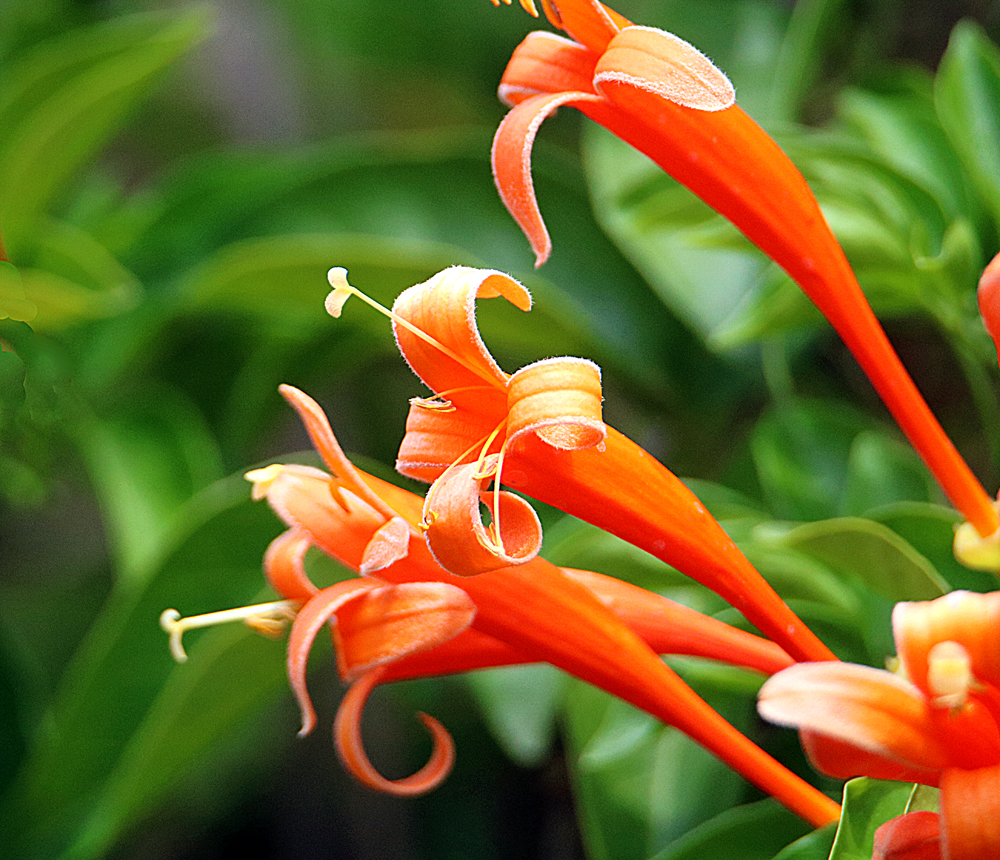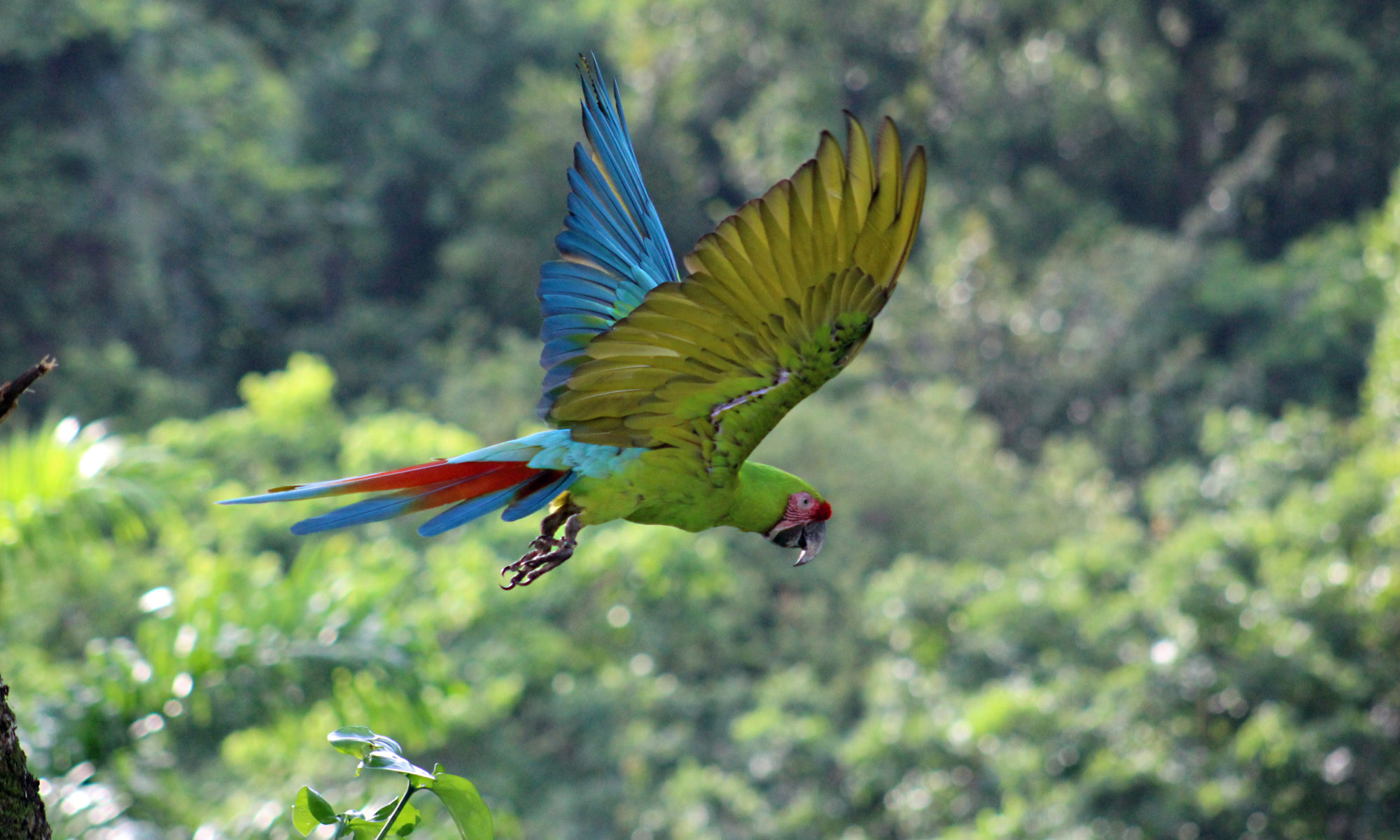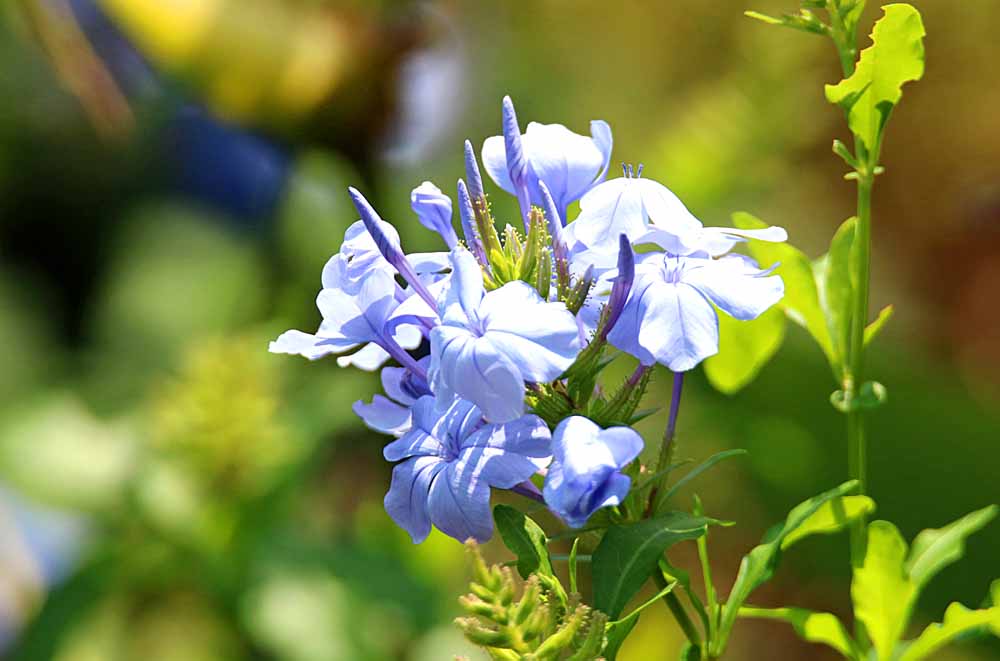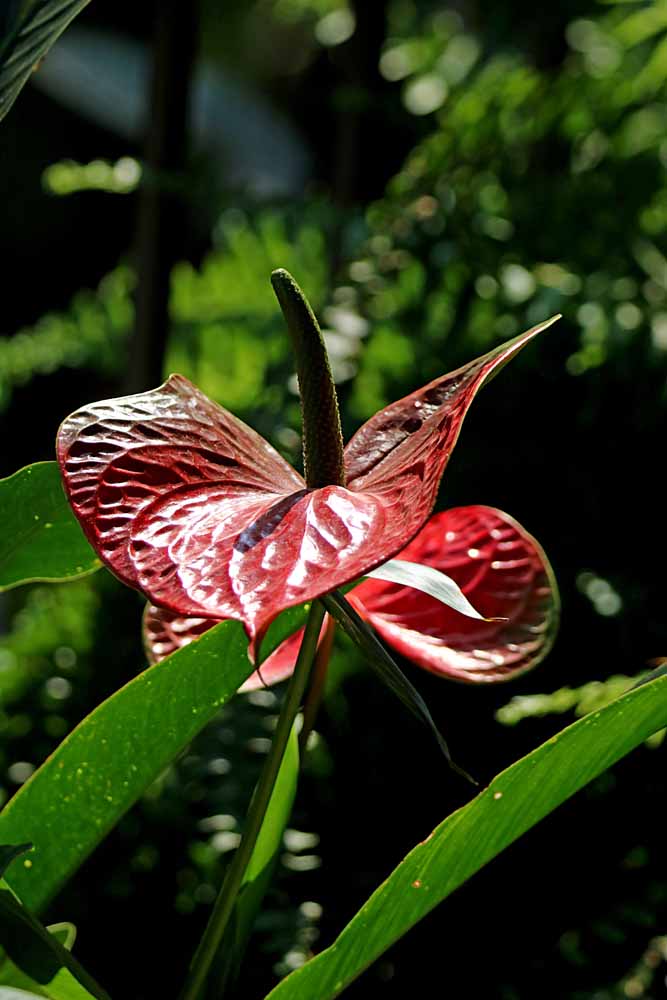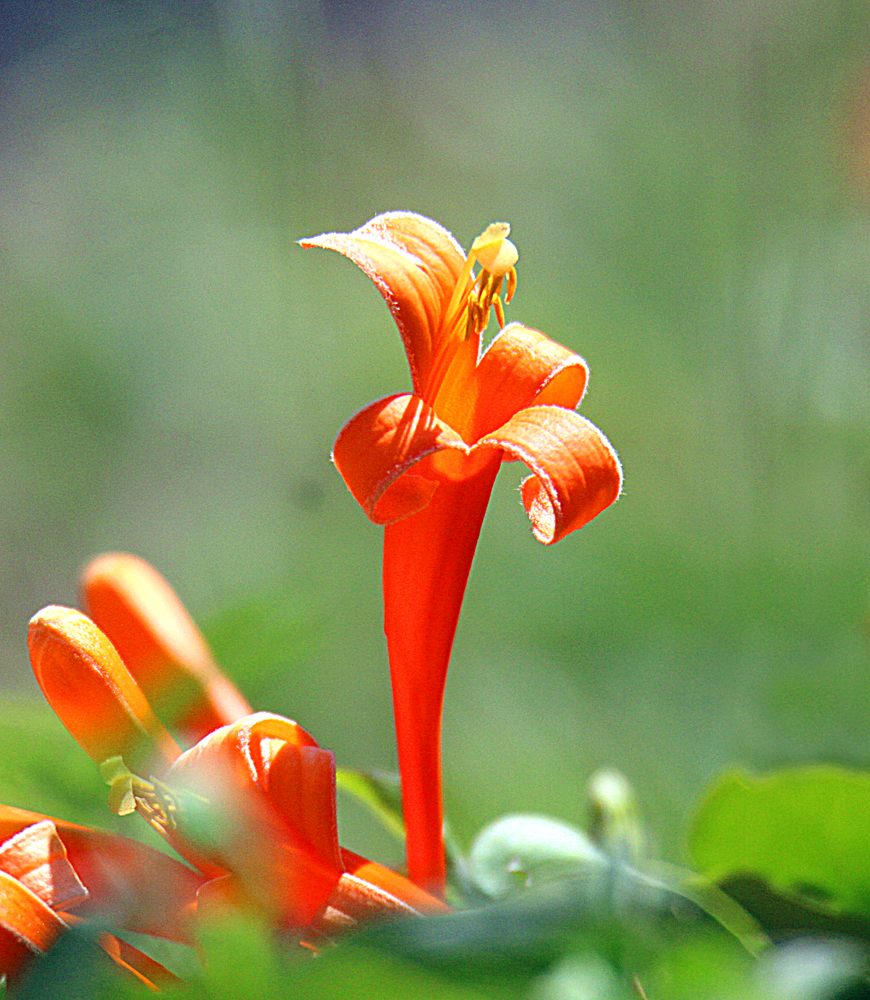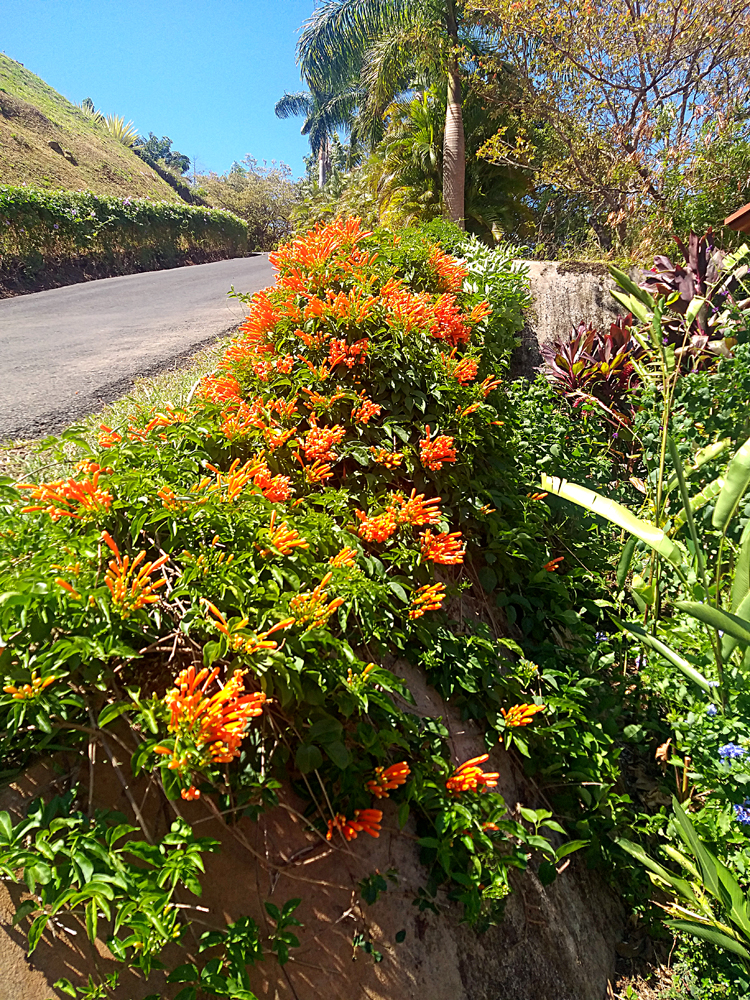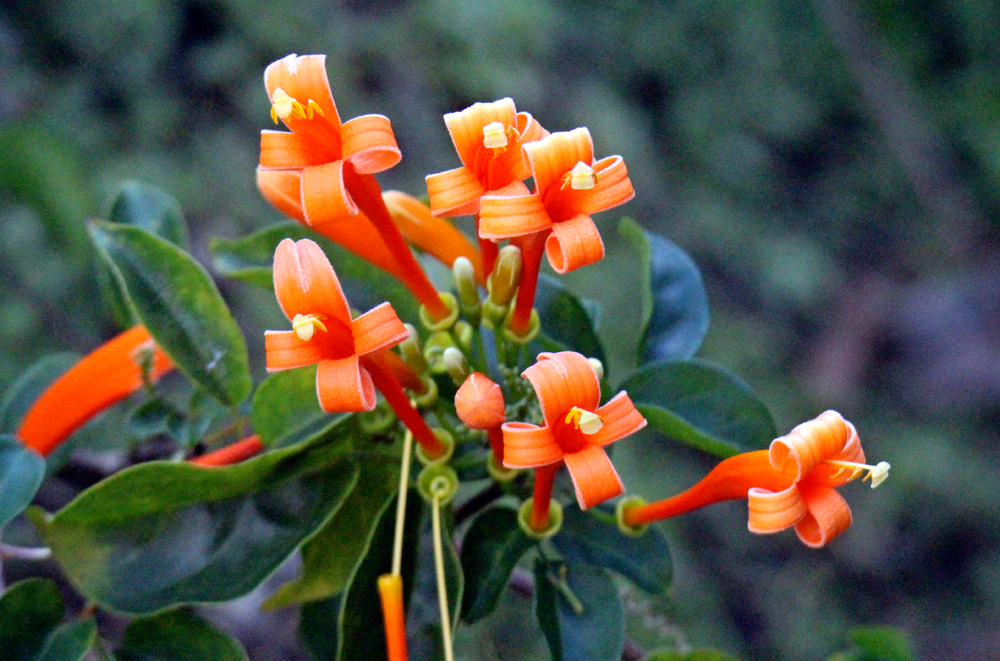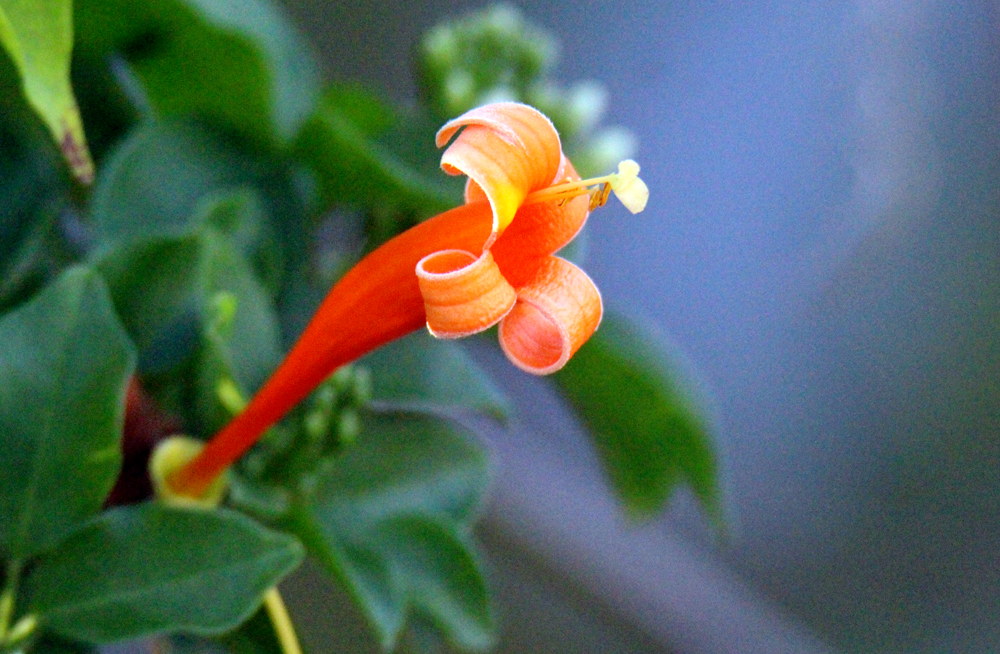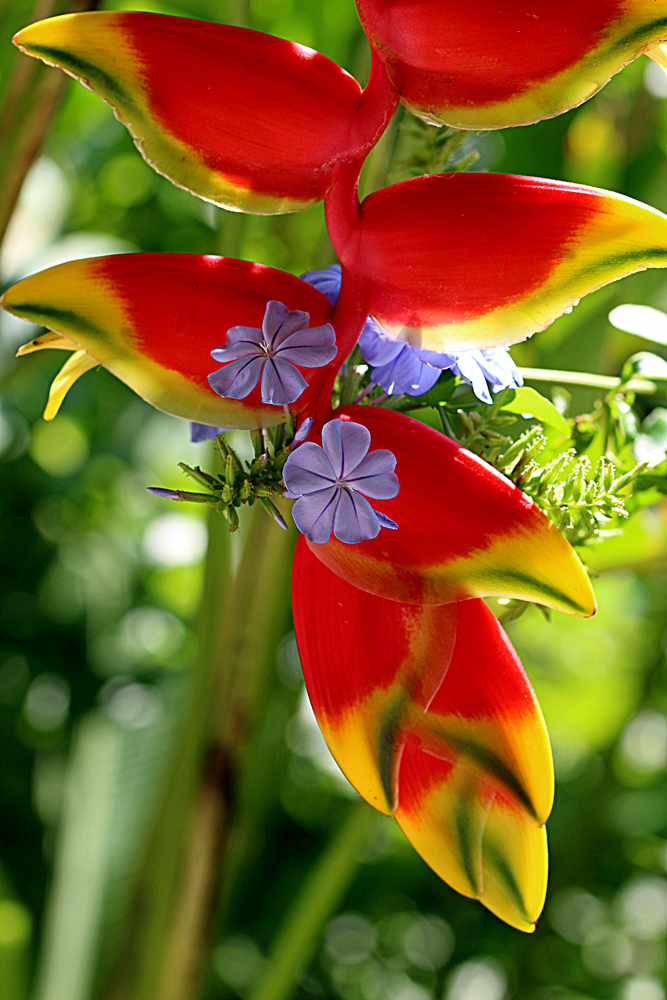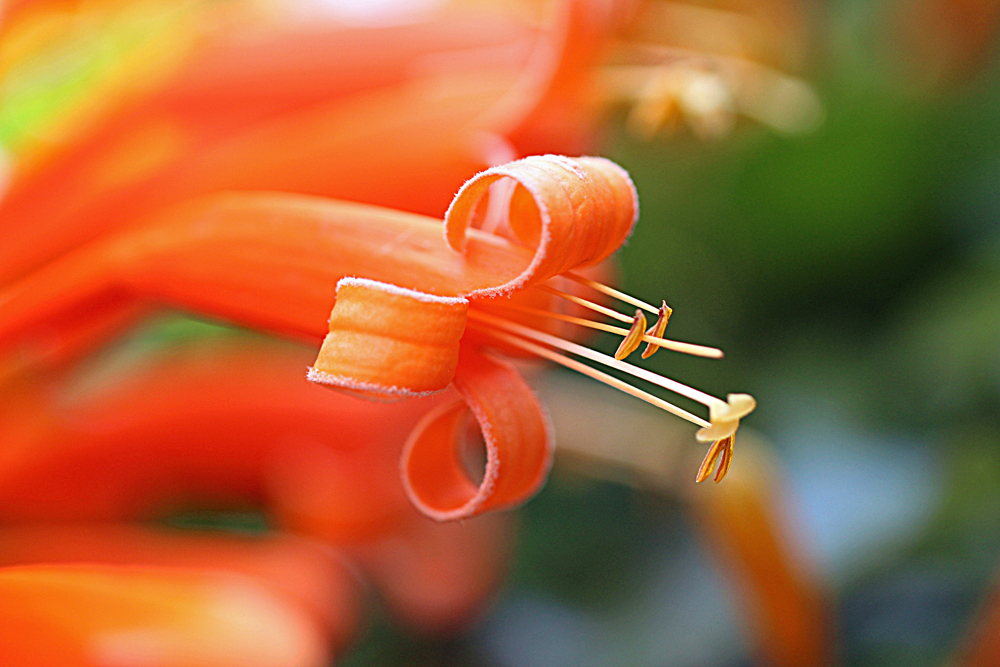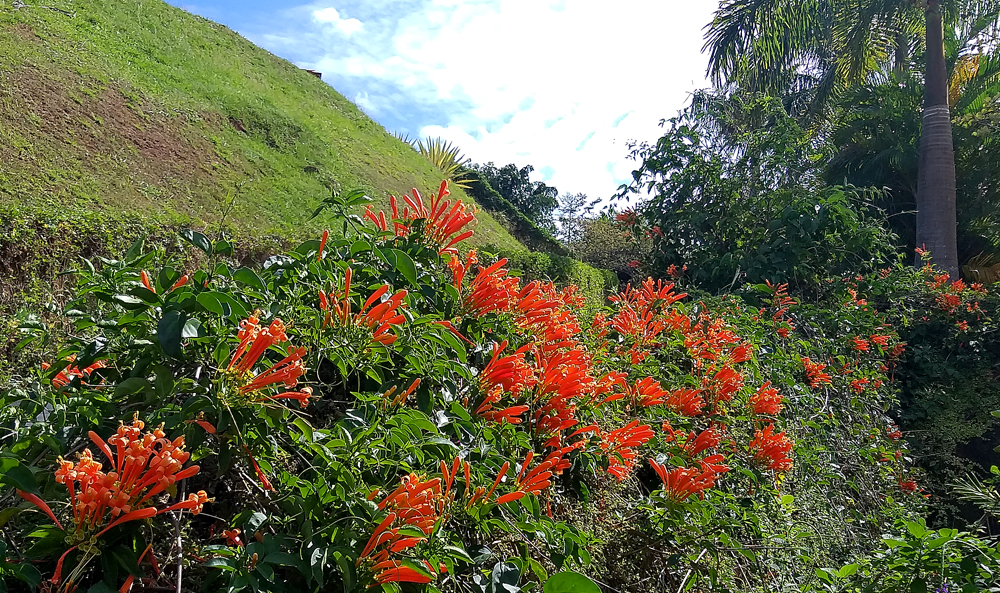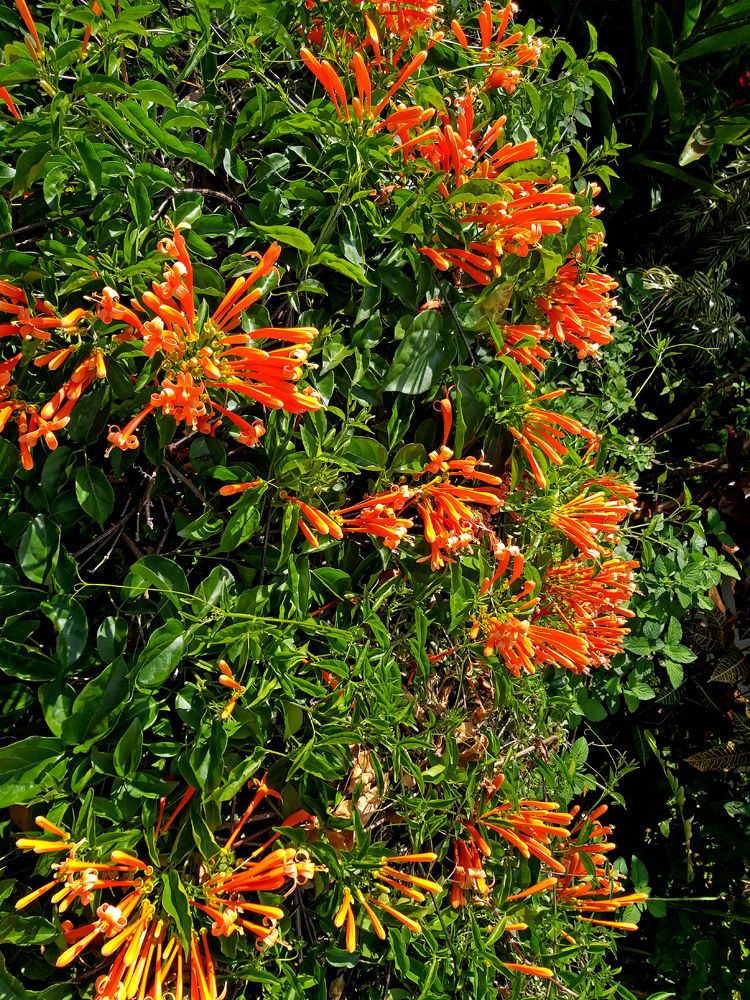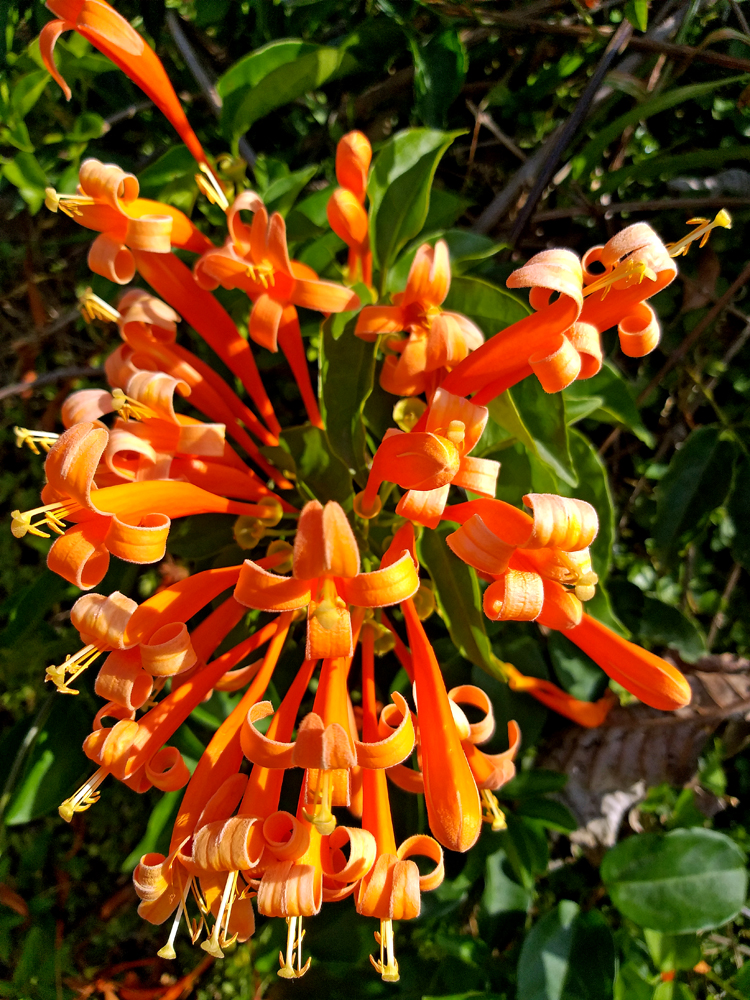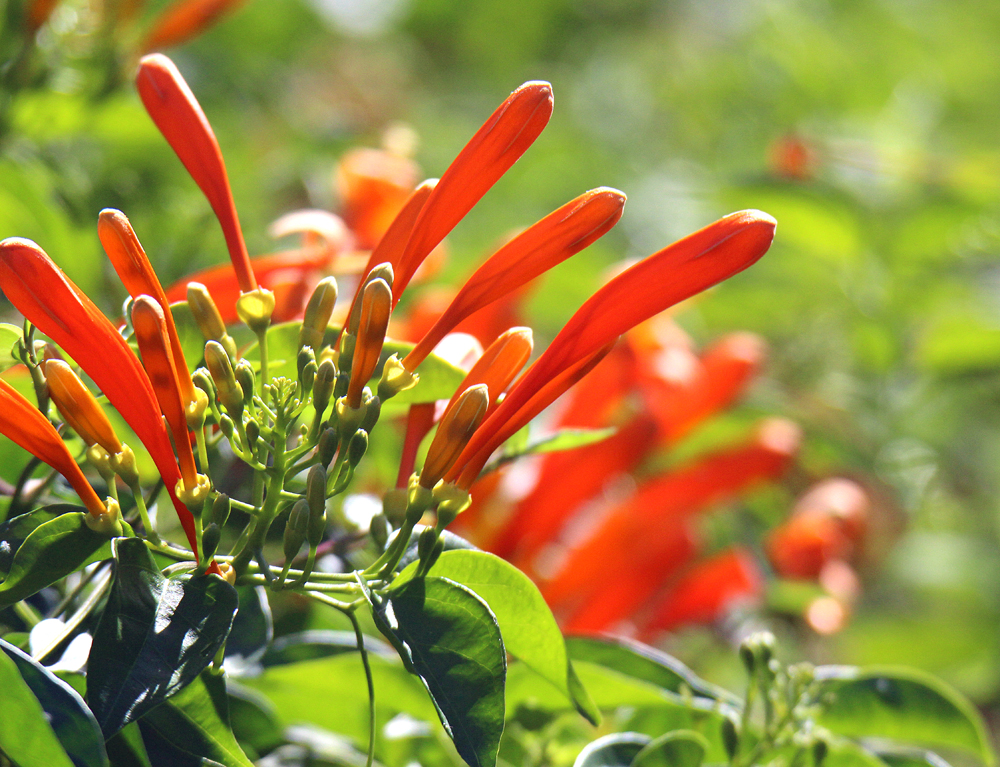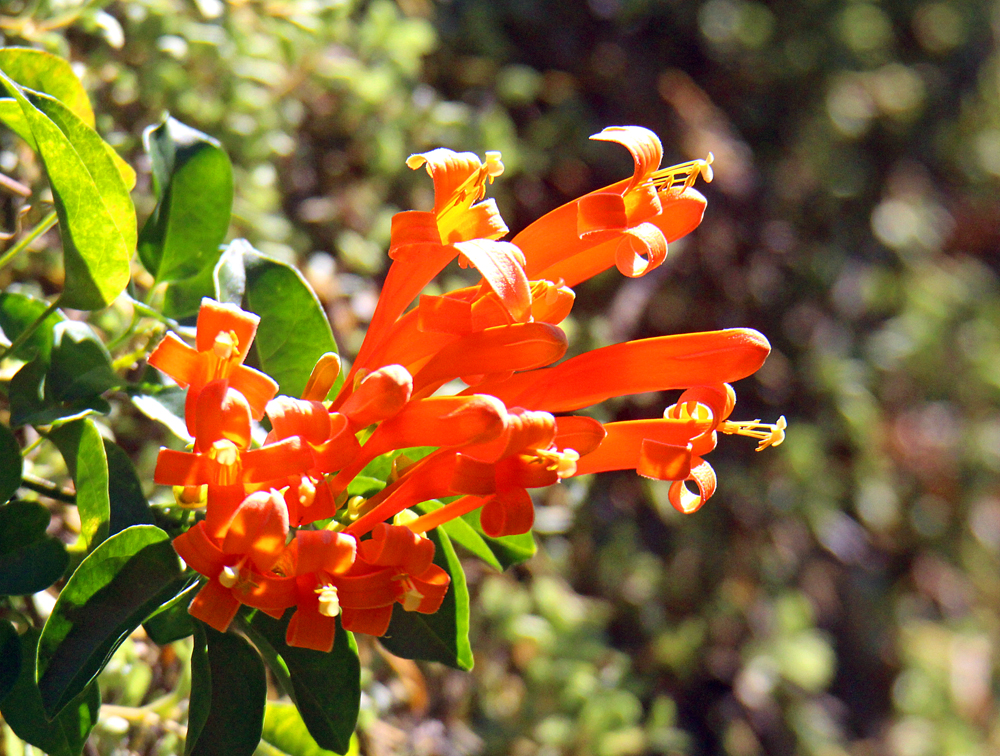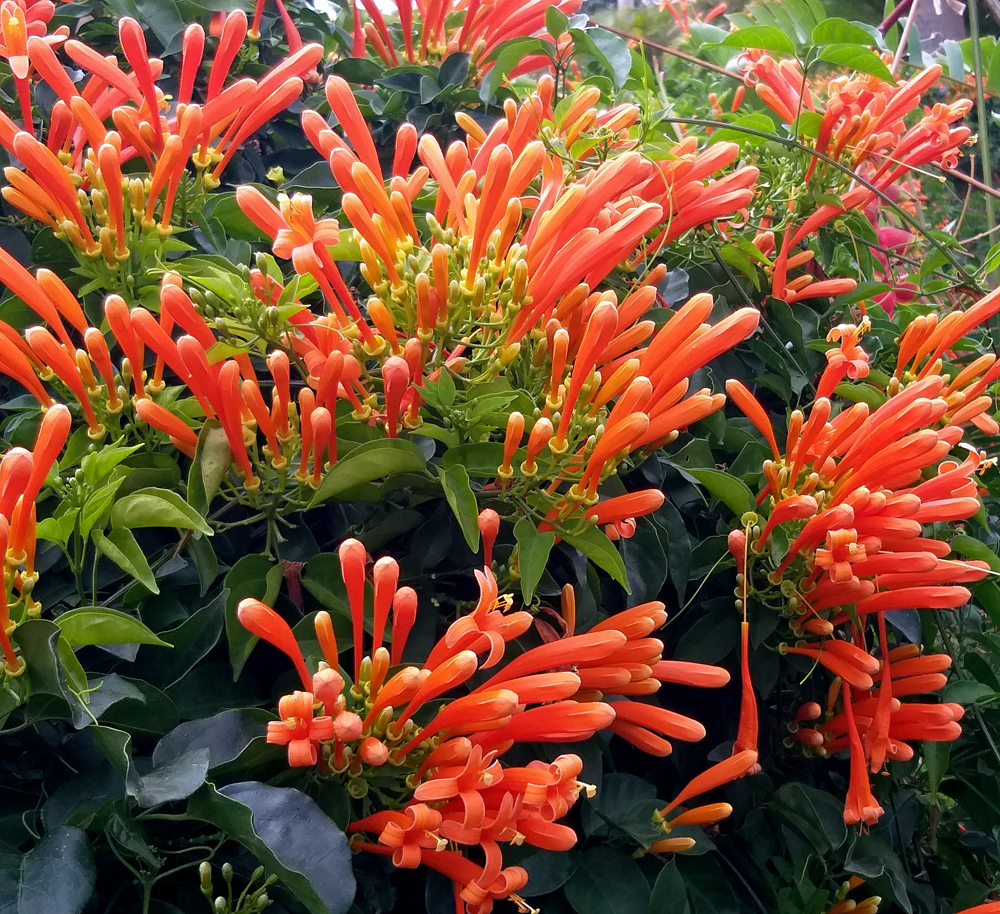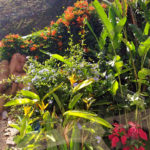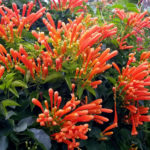Triquitraque or Mexican Flame Vine was the name of my article last April when my vine was at its best. This year it seems to be peaking a lot earlier or hopefully it will be for longer! As stated then, “Triquitraque” is the Costa Rica name of this profusely blooming and glowing vine while most Americans call it “Mexican Flame Vine” and now I read online line that in Florida they are actually calling it “Florida Flame Vine.” 🙂
As planned when I planted it around three years ago, it is mostly covering the stark concrete wall behind my tropical garden giving a blaze of color when traveling up or down the hill. My landlord likes it along his driveway! The butterflies & hummingbirds do too! Here’s a couple of views from above and one from the kitchen window through its glare and reflection of my hands and the kitchen sink. When not traveling, I enjoy my gardens! ¡Pura Vida!
Orange is the happiest color.
Frank Sinatra
Click image to enlarge:
This sun-loving, evergreen vine is also known as the flame flower or the golden shower. It’s native to Brazil and Paraguay, where it flourishes in rocky scrub habitats and forests that are seasonally dry. It grows quickly, spreading with tendrils; a single stem can be 80 feet (24 meters) long! Its genus name Pyrostegia comes from Greek words for “fire” (pyr-) and “cover” (steg-), and when it flowers in fall and early winter, it is engulfed in spectacular, flame-colored blooms that attract hummingbirds. ~San Diego Zoo
University of Florida Article on growing Flame Vine
San Diego Zoo Article on Flame Vine
Report on My “Weekly Post” Survey
Basically everyone who responded to my request for comments are simply very kind and flexible people; meaning I did not get any strong opinions one way or the other and you readers are divided on your interests, so I am probably going to continue mostly the way I have been blogging, with no more pressure to have a daily post, feeling free to skip days every once-in-awhile, maybe several in a row.
I will not legalistically stick to my original theme of “Retirement in Costa Rica” though that is who I am, thus all related! Even the above flowers! 🙂 And I will always strive for better quality writing and photography! I live a “Pura Vida” life here and will continue to report on it, sometimes daily, sometimes every few days or weekly. Since it was flowers today, I’ll do a serious article tomorrow and then back into my usual groove! 🙂 And by the way, if you ever wondered, those 3 “Related” earlier posts at the bottom of each post are not my choices but something the WordPress blogging computer chooses based on subjects and key words. Interesting!f And usually very well related!
Like this:
Like Loading...
